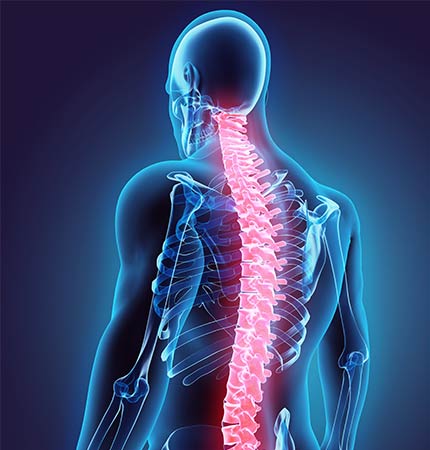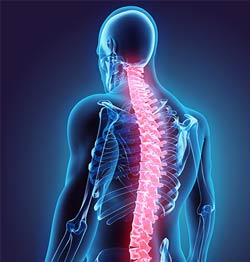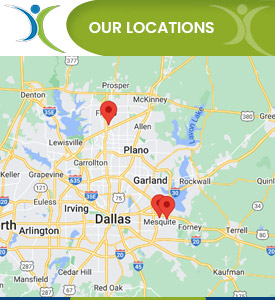Medial Epicondylitis (Golfers Elbow) Treatment Specialist Serving DFW, Frisco, Sunnyvale and Mesquite TX
Medial epicondylitis is a disorder characterized by pain caused by inflammation that extends from the medial side of the elbow to the wrist. Dr. Andrew H. Morchower, M.D., M.P.H., provides proper diagnosis and treatment for medial epicondylitis at OmniSpine Pain Management. For more information, contact us or book an appointment online. We have convenient locations to serve you in Frisco, TX, Sunnyvale, TX and Mesquite, TX.


Table of Contents:
What is medial epicondylitis?
What causes medial epicondylitis?
What are the symptoms of medial epicondylitis?
How is medial epicondylitis diagnosed?
Medial epicondylitis, commonly known as golfer’s elbow, is a condition characterized by pain and inflammation on the inner side of the elbow. Despite its name, this condition is not exclusive to golfers. Medial epicondylitis is caused by repetitive motion or overuse of the forearm muscles that attach to the medial epicondyle, which is a bony bump on the inside of the elbow.
To diagnose medial epicondylitis, a healthcare professional will evaluate your symptoms, conduct a physical examination, and order imaging tests if necessary. Treatment options for medial epicondylitis include rest, ice, physical therapy, anti-inflammatory medications, and in severe cases, corticosteroid injections or surgical intervention. It’s essential to seek medical advice from a knowledgeable practitioner to obtain an accurate diagnosis and appropriate management of your condition.
Medial epicondylitis is caused by repetitive or excessive stress on the muscles and tendons that attach to the medial epicondyle. Some of the common factors that can contribute to the development of a golfer’s elbow include:
● Repetitive motions – Activities that involve repetitive wrist flexion and forearm rotation, such as golfing, playing tennis, throwing, or repetitive gripping, can strain the tendons and muscles in the forearm.
● Excessive force – Engaging in activities that require excessive force or strain on the wrist and forearm muscles increases the risk of medial epicondylitis.
● Improper technique – Using improper form during sports or other activities puts added stress on the tendons and increases the likelihood of injury.
● Age and gender – Medial epicondylitis is most common in individuals between the ages of 40 and 60. It also affects men more often than women.
● Occupational factors – Certain occupations that involve repetitive gripping or forceful wrist movements, such as carpentry, plumbing, and painting, increase the risk of a golfer’s elbow.
Golfer’s elbow often presents several frustrating symptoms. While these symptoms vary in intensity and duration from person to person, they typically include:
● Pain and tenderness – The main symptom of medial epicondylitis is pain and tenderness on the inner side of the elbow. This discomfort typically worsens over time or appears suddenly after an activity.
● Limited range of motion – Medial epicondylitis often leads to a reduced range of motion in the elbow joint. This makes it difficult to fully extend or flex the arm.
● Weakness and stiffness – People with medial epicondylitis often experience weakness in their grip and forearm, making it challenging to perform simple tasks like shaking hands or lifting objects. Stiffness in the elbow joint is also common.
● Pain radiating down the forearm – In some cases, the pain from the inner elbow can radiate down the forearm, causing discomfort along the forearm muscles.
● Pain that worsens with movement – Pain associated with medial epicondylitis tends to worsen with certain movements, such as flexing or twisting the wrist, gripping objects, or making a swinging motion.
If you’re experiencing these symptoms and suspect you have medial epicondylitis, it’s recommended to consult a pain specialist to receive an accurate diagnosis and comprehensive treatment options.
Diagnosing medial epicondylitis involves a combination of a physical examination, a review of your medical history, and in some cases, imaging tests. Here’s what to expect during the diagnosis process:
● Medical history review – The doctor will discuss your symptoms, their duration, and any activities or movements that may have triggered or worsened the pain. They will also inquire about your occupation and hobbies that involve repetitive arm and wrist motions.
● Physical exam – The physician will perform a thorough physical examination of the affected elbow. This will involve palpating the area to assess tenderness and pain. Your range of motion, strength, and flexibility in the elbow, wrist, and forearm will also be evaluated.
● Imaging tests – In certain cases, imaging tests such as X-rays or MRI scans will be used to rule out other potential causes of your symptoms.
● Differential diagnosis – Golfer’s elbow presents similar symptoms to conditions such as tennis elbow and arthritis. The doctor will carefully review all findings to ensure an accurate diagnosis.
Following this process, the specialist will make a diagnosis and create a suitable treatment plan to relieve your discomfort.
Golfer’s elbow, if left untreated, can cause long-lasting consequences by reducing your elbow’s flexibility and range of motion, producing persistent discomfort, and weakening your grip. Medial epicondylitis treatment is available at OmniSpine Pain Management. For more information, contact us or book an appointment online. You can visit us at our clinics located in Frisco, TX, Sunnyvale, TX, and Mesquite, TX. We serve patients from Dallas TX, Frisco TX, Mesquite TX, Sunnyvale TX, Plano TX, Garland TX, Forney TX, Cedar Hill TX, Denton TX, Balch Springs TX, and surrounding areas.
Check Out Our 5 Star Reviews






